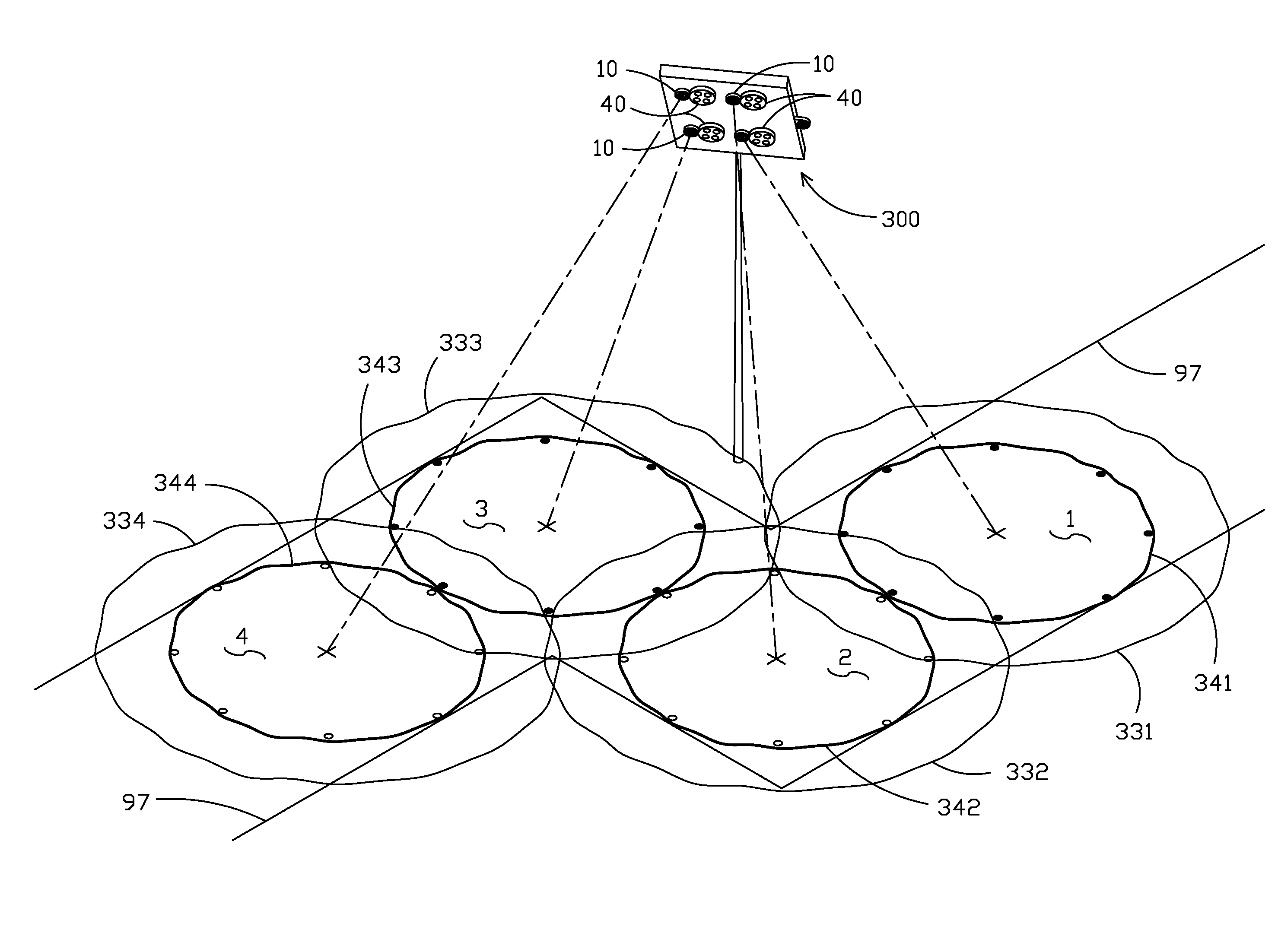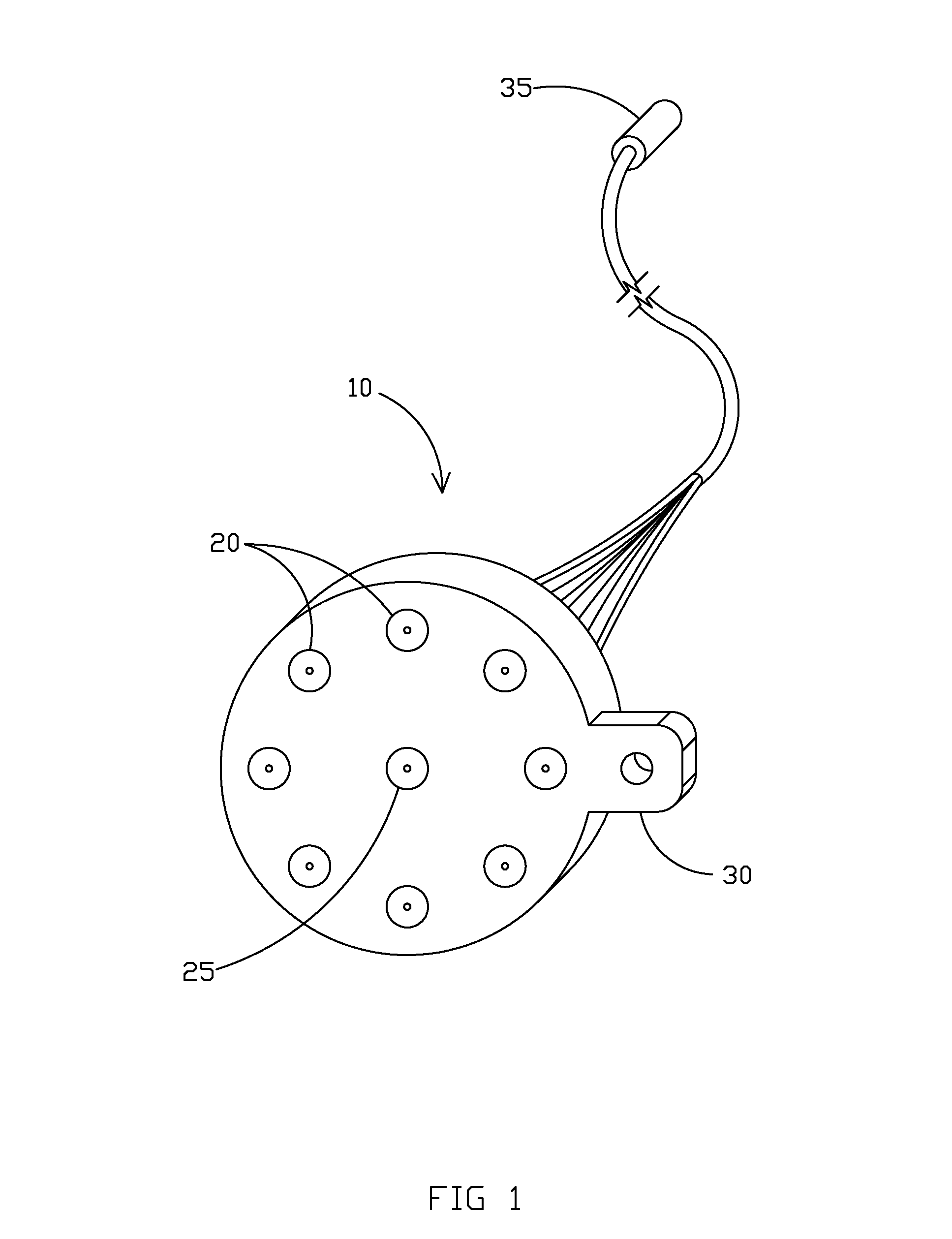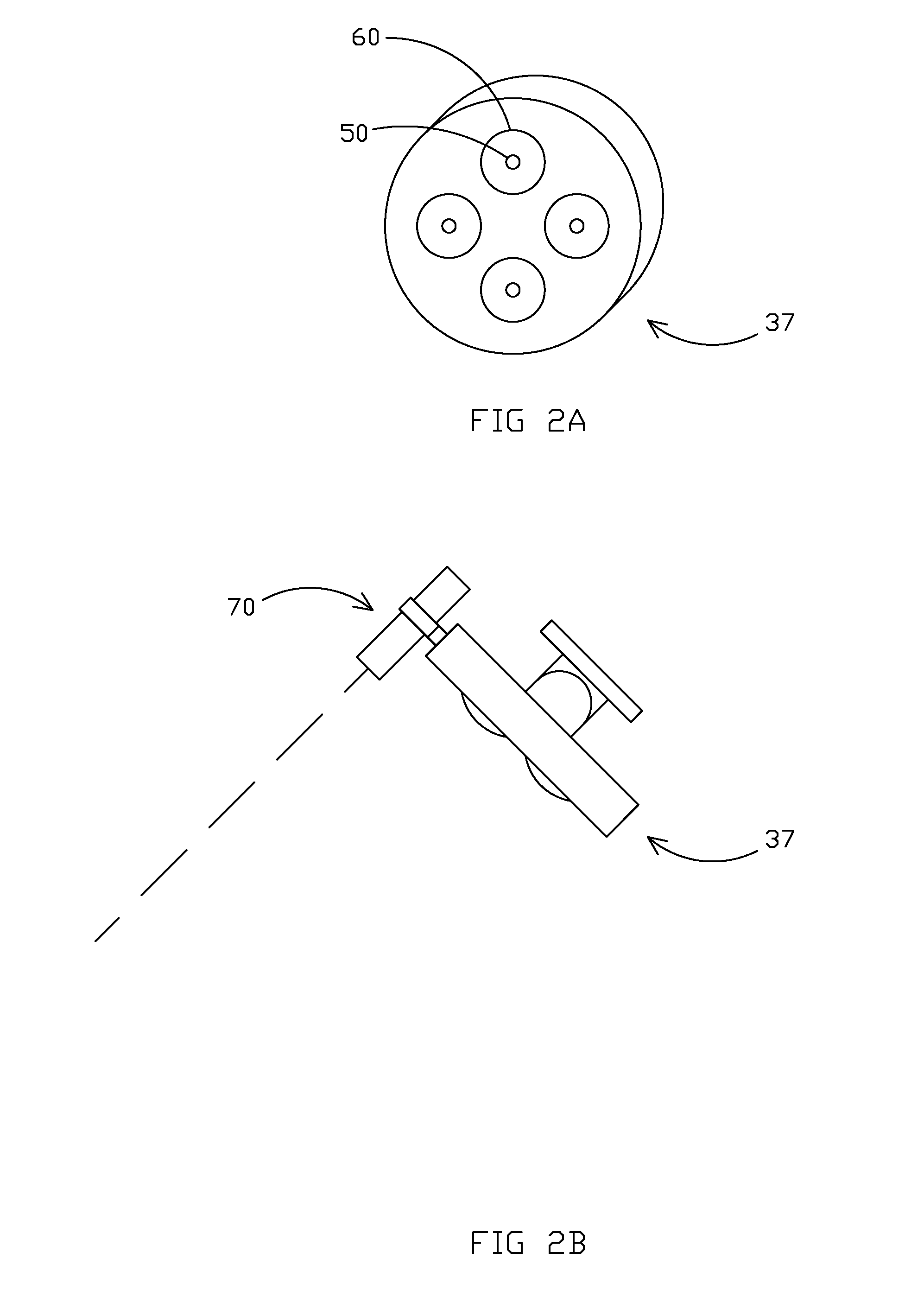Method, system, and apparatus for aiming LED lighting
- Summary
- Abstract
- Description
- Claims
- Application Information
AI Technical Summary
Benefits of technology
Problems solved by technology
Method used
Image
Examples
first embodiment
[0039]One embodiment according to aspects of the invention uses point-by-point analysis to provide aiming points for fixtures. The result of this analysis is the ability to identify points on a target area such as a field, lot, or building, which can be used as targets for aiming fixtures. Frequent reference should be taken to FIGS. 7A and B. This example, illustrated through FIGS. 7A and B, pertains to an illumination task for buildings and other objects on a property. The FIGS. 7A and B show an image that could be displayed on screen 650 of, for example, a digital camera, or some display associated with a computer (laptop, PDA, smart phone, desktop, etc.). However, in this example, the methodology is applied to the physical property in the following way.
[0040]An efficient way to set up a demonstration of lighting or install lighting for illuminating the house, the trees to the right of the house, and the statue to the left of the house, would be to establish in real space aiming p...
second embodiment
[0055]Variation on the concept of helping define aiming points or assisting in characterizing how lighting would actually apply to a given lighting task are illustrated in FIGS. 1, 2A-G, and 3A-E. Instead of utilizing some reference points with range and azimuth measurement capabilities to then record a description of aiming points or other locations at the physical target, the embodiments of FIGS. 1, 2A-G, and 3A-E utilize one or more laser beams that would project from either a demonstration location, tentative installation location, or permanent installation location for a light fixture to the actual target. Among other things, the lasers can be used to assist in several useful procedures. The procedures include, but are not limited to: visualizing how a fixture's light beam would place on the target; aiming (either from the aiming location for the fixture or from the fixture itself to the target), or helping characterize the light beam pattern on the target.
[0056]In these exampl...
third embodiment
[0075]Another embodiment according to aspects of the invention uses multiple light sources 40 installed in a fixture 300, FIG. 3A. Laser arrays 10 could be installed on at least some of the light sources 40 and could be permanently or removably installed. Light sources 40 could be pre-aimed with reference to the entire fixture 300 such that the fixture would have a known beam pattern. Such beam pattern could be represented by the output from laser array 310. Aiming laser 370 could be included to allow laser array 310 to be aimed coaxially with the fixture. In this configuration, the fixture 300 would function identically to the previously described light sources 40 represented in FIG. 2D-2G. FIG. 3B shows fixtures 300 and 301 projecting 50% laser dots 350 and 351 and 10% curves 380 and 381. Laser dots 350 and 351 correspond to the 50% curves 390 and 391.
[0076]Fixtures 300 and 301 could also be installed using “fixture laser array”310 and 311 respectively, see also array 310 in FIG. ...
PUM
| Property | Measurement | Unit |
|---|---|---|
| Fraction | aaaaa | aaaaa |
| Color | aaaaa | aaaaa |
| Area | aaaaa | aaaaa |
Abstract
Description
Claims
Application Information
 Login to View More
Login to View More - R&D
- Intellectual Property
- Life Sciences
- Materials
- Tech Scout
- Unparalleled Data Quality
- Higher Quality Content
- 60% Fewer Hallucinations
Browse by: Latest US Patents, China's latest patents, Technical Efficacy Thesaurus, Application Domain, Technology Topic, Popular Technical Reports.
© 2025 PatSnap. All rights reserved.Legal|Privacy policy|Modern Slavery Act Transparency Statement|Sitemap|About US| Contact US: help@patsnap.com



